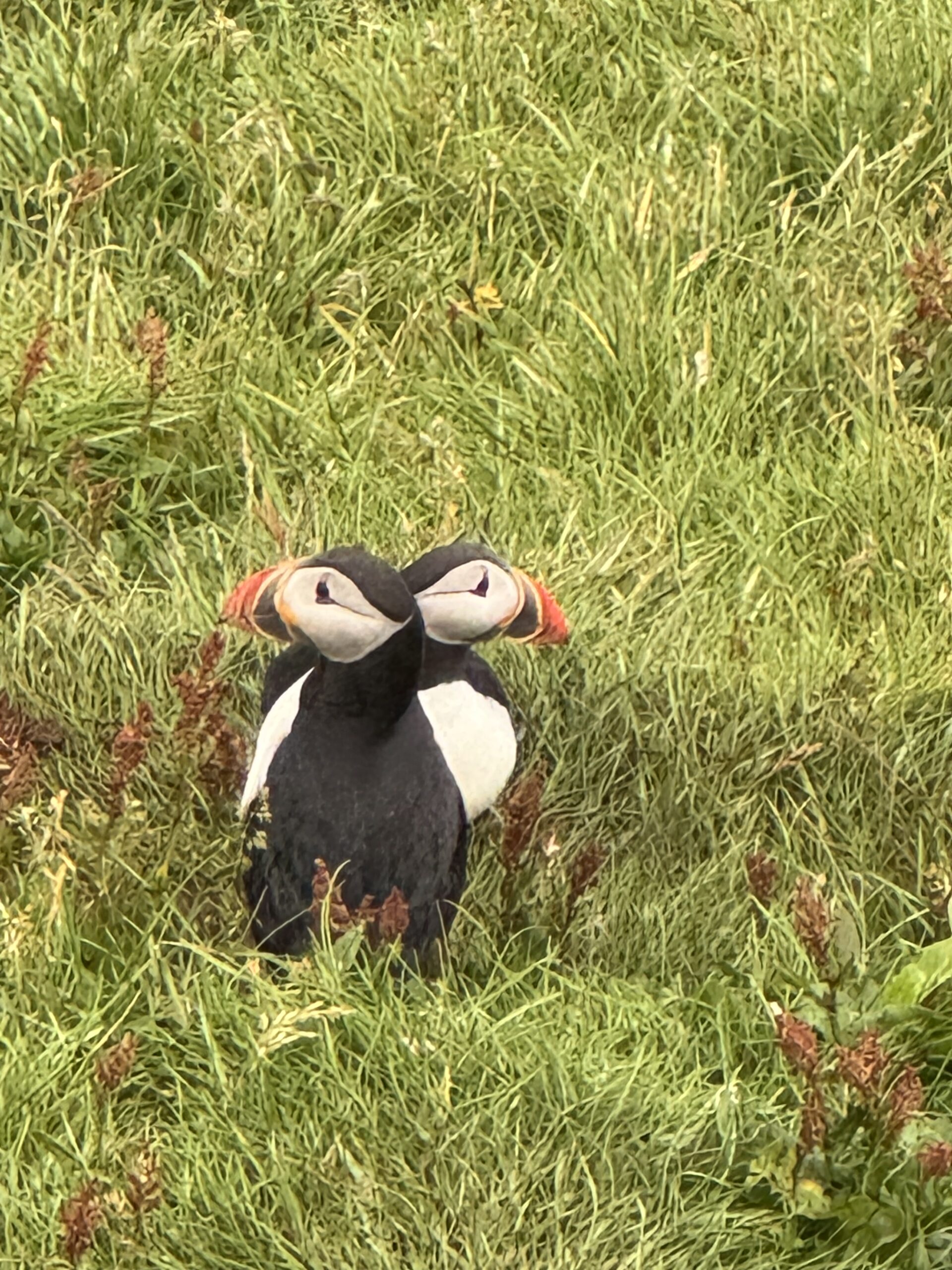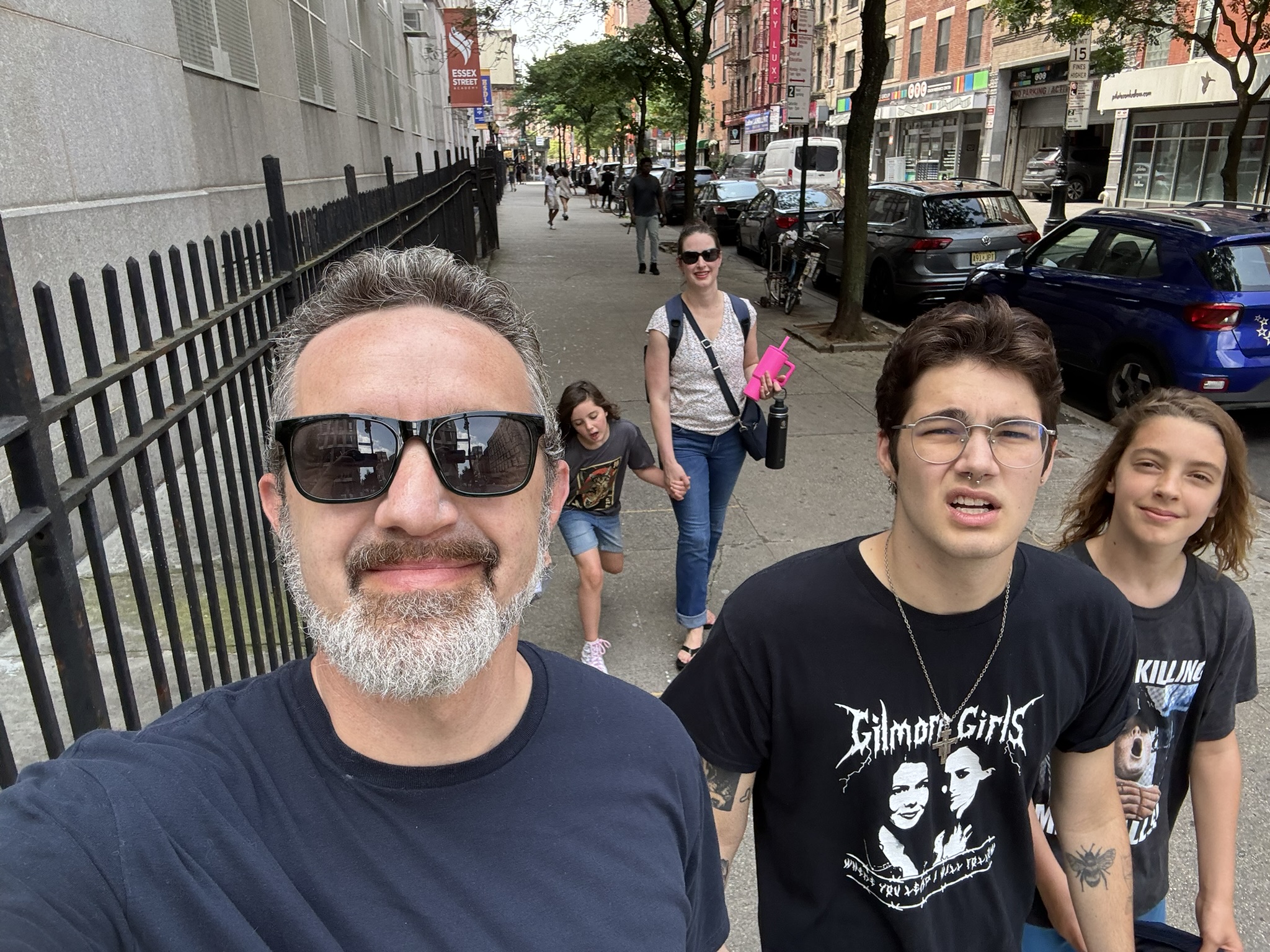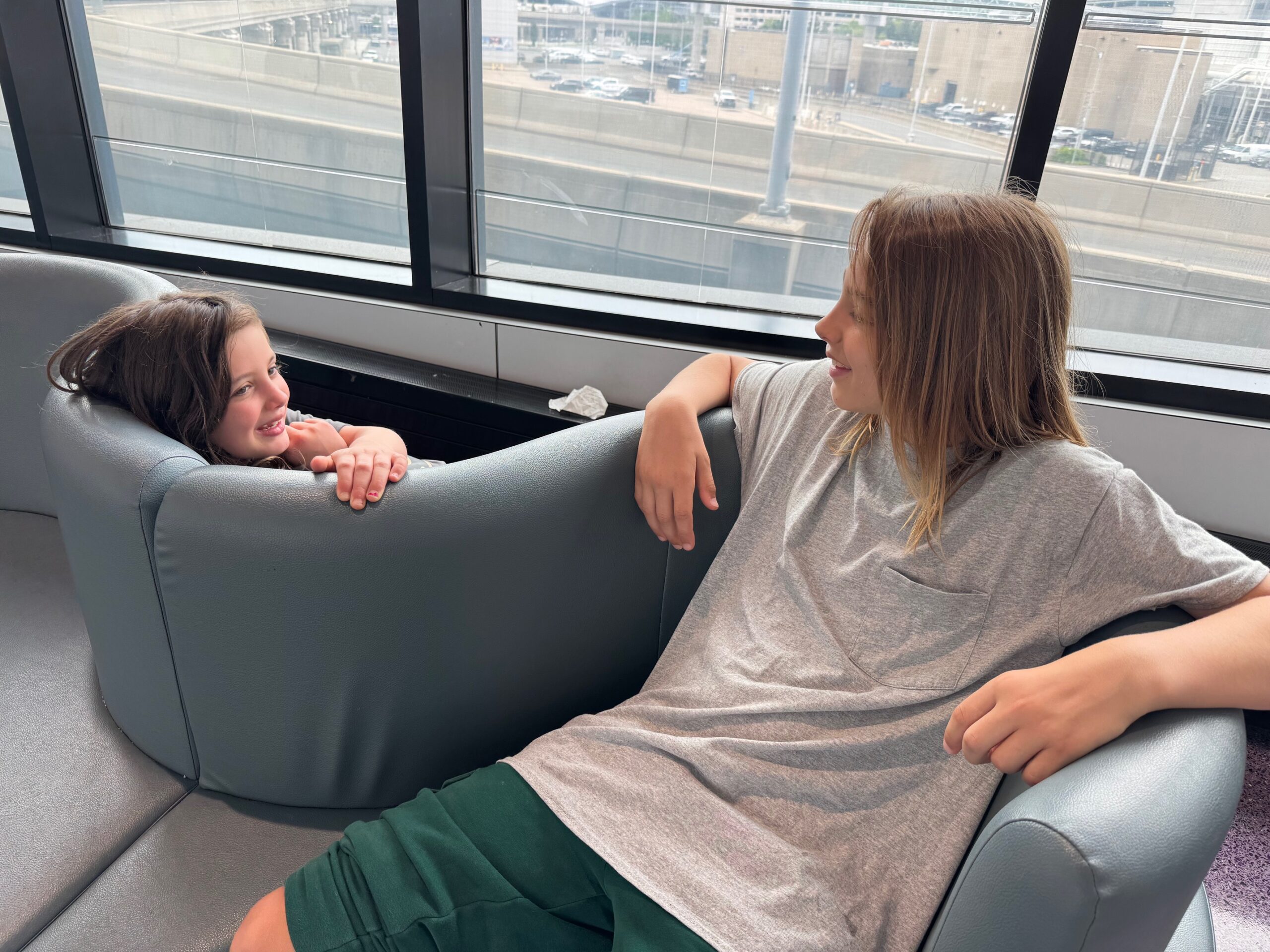We woke up on Heimaey Island! We are staying in Lava Guesthouse, which is in a house named “Vik,” built in 1913. On the Westman Islands, and in certain other communities in Iceland, they name their houses, especially if they are quite old. I appreciate this practice as I think it provides a sense of home and continuity to a structure over the generations. It is even more significant on Heimaey Island, as this year of construction means it withstood the catastrophic volcanic eruption of 1973 (more on that later!) Our room was cozy and the shared kitchen was nice, though we did feel cramped and missed having our own space.
After doing some more thorough grocery shopping and admiring some neighborhood art (a lovely mural and some stones painted as the South Park characters), we found the local soccer field so Ezra could do his training. Other than the surroundings, the field was the exact same style and measurements as the one near Reykjavik. It seems each town in Iceland has a very similar combination of soccer field, playground, jumping pillow, and town pool.
Once we got going on our day, we went to Viking Town. This was a very small, but highly interactive museum about the first Viking settlers on Heimaey, Herjolfur and his family. It is made up of a historically accurate building based on the actual archaeological findings, directly next to the original site (which was crushed by a landslide nearly 1,000 years ago.) The story was told that Herjolfur was from Norway and was the first settler. He was a mean/cruel man and took charge of the water supply for himself. He would not let others use it, which caused a large amount of problems. As chieftan of the island, he could control the water supply. He was unrelenting, but his daughter felt for the growing number of settlers and snuck water off to them under her father’s nose. Her father was upset by this, but she did not stop. One day she was visited by a raven that took some food from her. She chased the raven to get back her food. As she was away from her home, the landslide occurred, burying the home, and killing her parents, three siblings, and the family’s servants. It was said that the bird was Odin’s raven, sent to lure her away from the impending doom due to her kindness to others in the face of her father’s cruelty. The museum had wax figures and write ups depicting the story and we were able to try some Viking snacks of homemade butter, dried fish, volcanic salt, and Icelandic vodka. Ezra and Naomi liked climbing around the rocks in the area and, once we left, immediately started role-playing the characters from the museum. It was small museum, but a worthwhile learning experience. It was especially cool as the museum was in a natural stone amphitheater that hosts one of the largest music festivals in Iceland each August. I was fascinated by this majestic place to host of festival and would love to come back one year in August to experience the festival live! The day we were there, there was some early stage preparation for this year’s festival, many ducks and nesting sea birds, and a fun play area for the kids that I imagine is also for the festival. We utilized it all!
For those of you who don’t know, Valerie loves lighthouses. As you might imagine for a rugged island nation, Iceland has many lighthouses. We went to see two of the ones on Heimaey today. The first was a small one by the harbor (which led to exploration, which led to a cool black church, a 16th century Danish fort, and an exploratory hike out to a rocky outcropping), while the second was on the east side of the island. The road to it was closed for construction, but that did not deter us. We navigated our way around that after a dead end or two and got to see the lighthouse.
Our main event for the day was hiking up Eldfell, the volcano that nearly destroyed the island in 1973. On January 21st, 1973 Eldfell’s eruption began and lasted for over 5 months. While all 5,300 residents of the island were safely evacuated to the mainland, over 400 homes and much livestock was destroyed or killed. One harrowing story told is that one of the the residents’ worst fears at the time (because it would have destroyed their fishing-based economy) was the destruction of the dock. Apparently, a brigade was formed to pump seawater onto the lava flow to get it to cool and harden before it reached the dock. The operation ended up being successful and the dock was spared. This story, and that of the rebuild, are prominent on the island and demonstrate the dynamic spirit of the people and their teamwork and determination. It is really interesting to see the island over 50 years later and still see lava fields and rocks that just stop at the exact point the flow hardened 50+ years ago (including a partially destroyed cement water storage tank directly next to the waterline). Eldfell, in Icelandic, even means “hill of fire.”
After several days of beautiful weather, this day was very damp and misty/foggy with extremely limited visibility. Naomi decided not to continue the hike at one point as she was getting scared of the visibility issue combined with the height (660 foot elevation.) She and Valerie turned back, but Ezra and I continued. While we couldn’t see anything (the inside of the volcano, the ground, the path we hiked on!), it was still very rewarding. Even though it was a different experience than it would have been had it been a sunny, clear day, the mist added an other worldy feeling of mystery. Even though Glymer was much higher up, the limits to basic visibility here made us feel like we were at the top of the Earth and the only people in existence. The mist was so thick that on the way back down, my glasses kept getting so covered in small droplets, I had to take them off and carry them as I could no longer see through them. Ezra led us back down the path, ensuring that I didn’t walk off the edge, haha.
We ended the evening at the southern edge of Heimaey, which is the largest Atlantic Puffin colony in the world (a total population of 2 million puffins.) Naomi was so excited as seeing puffins was pretty much her number one goal in Iceland! Besides being cool looking, puffins are very interesting birds. They mate for life, show affection for their partner with beak taps, and return to the same borough on the same cliff that they were born on for their entire lives. They are very fast, but their wings are quite small. Watching them fly out to sea to fish is quite funny as they sort of jump from the cliff with rapidly flapping wings, descend quickly, and then even out and speed out to sea much closer to the water’s surface than most other birds. When they come back to their boroughs, they fly just above the spot, slow down for a split second and then sort of drop to the ground like a helicopter. Puffins actually have solid bones so cannot fly as high as we are accustomed to with many other bird species. Atlantic puffins live fully on water for 9 months of the year and only come to land from May-July to nest each year. Each pair produce just one egg per year. Their tongues also have small spikes on them, which makes it easier for them to hold many fish in their beaks at the same time.
We observed the birds from a constructed viewing deck toward the top of the cliff with the puffins below us and wrapping around from our side across the rest of the cliff. The closest puffin was about 30 feet from us (there were also thousands of seagulls, though on a totally separate cliff further out other than the occasional one who “invaded” a section of the puffin cliff forcing the puffins to momentarily scatter). It was amazing to watch the puffins flap their short black wings so furiously to speed out to sea to fish; they looked almost like little bats! I think if I lived on the island, I would come out to watch their flight patterns for a little while just about every clear day. It was a great introduction to a creature so connected with Iceland!
See you on the next mountain!
July 8, 2025 – Total Steps 15,524 (Decent elevation at the volcano)






























































































